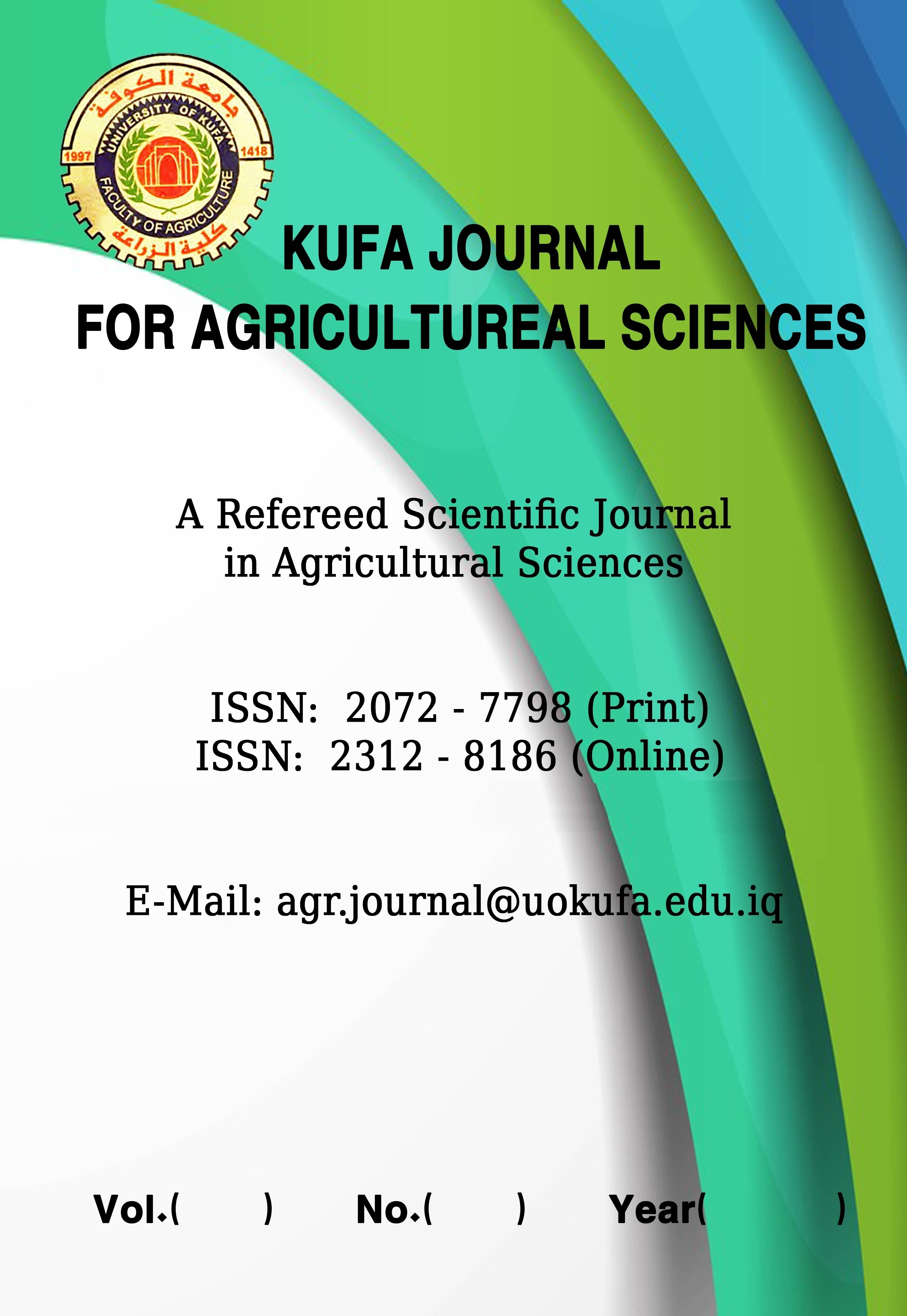Assessing the Chemical and Biological Effectiveness of Nano-Engineered Factors in Enhancing Resistance in tomato against Xanthomonas campestris pv. vesicatoria
DOI:
https://doi.org/10.36077/kjas/2024/v16i1.12536Keywords:
Tomato, Nano-zinc oxide, Xanthomonas campestrisAbstract
Bacterial spot a significant disease that affects tomato crops, despite limited studies and scientific research on this disease, So This study aimed to assess the efficacy of various biological and chemical factors in controlling bacterial spot disease in the field. A field survey was conducted in Najaf Al-Ashraf, specifically in areas such as Al-Haidariya, Al-Rahima, Al-Abbasia, and 20 plastic houses. The disease incidence was observed in these locations, with infection rates from 24% to 60%. Among them, Al-Haidariya had the highest infection rate at 60%, while Al-Abbasia had the lowest at 24%. Regarding to the impact of chemical and biological inducing factors on infection severity, the treatment using nanoscale zinc oxide demonstrated superior effectiveness in reducing the severity of infection caused by Xanthomonas campestris pv. vesicatoria, In reducing the severity of the infection, which amounted to 11.6%, compared with the treatment of X.campestris 2 (control 2) only, which amounted to 74.2%.Field results also indicated that the nanoscale zinc oxide treatment was highly effective in increasing chemical indicators such as chlorophyll content, peroxidase enzyme and catalase enzyme. The values for these indicators were 12.69 mg g-1, 183.25-unit min-1 g-1 FW and 177.84-unit min-1 g-1 FW, respectively, compared to the control treatment, which recorded values of 7.79 mg g-1, 88.3-unit min-1 g-1 FW, and 74.17-unit min-1 g-1 FW, respectively. Furthermore, the treatment using Pseudomonas putida demonstrated superiority in increasing the percentage of TSS, vitamin C content, and acid percentage. The values for these parameters were 8.45%, 20.86 mg g-1, and 0.862%, respectively, compared to the control treatment, which recorded values of 4.78%, 11.09 mg g-1 and 0.462%, respectively. Moreover, the nanoscale zinc oxide treatment exhibited superior effectiveness in increasing the yield per plant, early fruit yield per plant, and total yield. The values for these parameters were 7.54 kg plant-1, 10.261 kg. plant-1 and 8.591 tons plastichouse-1 (500 m²), respectively, compared to the control treatment, which recorded values of 4.15 kg plant-1, 3.752 kg plant-1, and 4.929 tons/plastic house (500 m²), respectively.
Downloads
Downloads
Published
How to Cite
Issue
Section
License
Copyright (c) 2024 Ghosoun Habib Sabri Al-Rubaie, Saba A. K. Al-Fallooji

This work is licensed under a Creative Commons Attribution 4.0 International License.
Kufa Journal for Agricultural Sciences is licensed under the Creative Commons Attribution 4.0 International License, which allows users to copy, to create extracts, abstracts and new works from the Article, to alter and revise the Article, and to make commercial use of the Article (including reuse and/or resale of the Article by commercial entities), provided the user gives appropriate credit (with a link to the formal publication through the relevant DOI), provides a link to the license, indicates if changes were made and the licensor is not represented as endorsing the use made of the work. The authors hold the copyright for their published work on KJAS website, while KJAS responsible for appreciate citation for their work, which is released under CC-BY-4.0 enabling the unrestricted use, distribution, and reproduction of an article in any medium, provided that the original work is properly cited.














